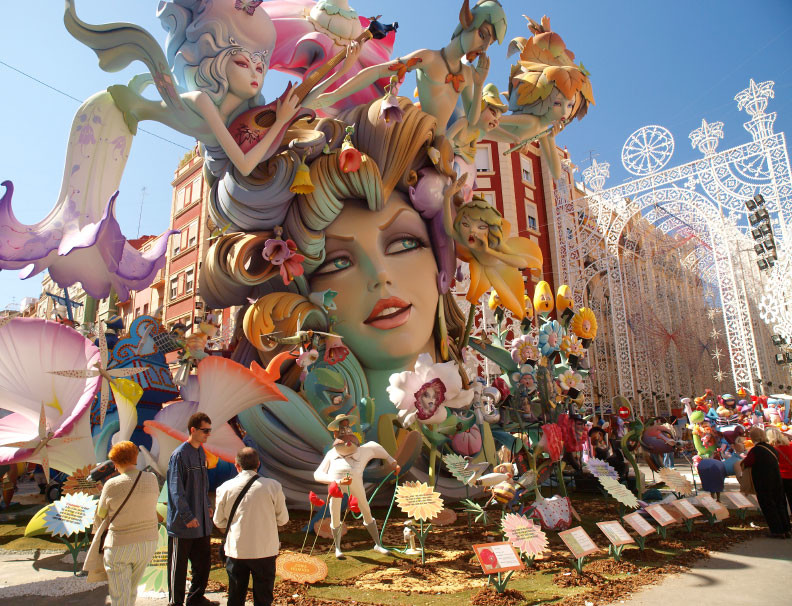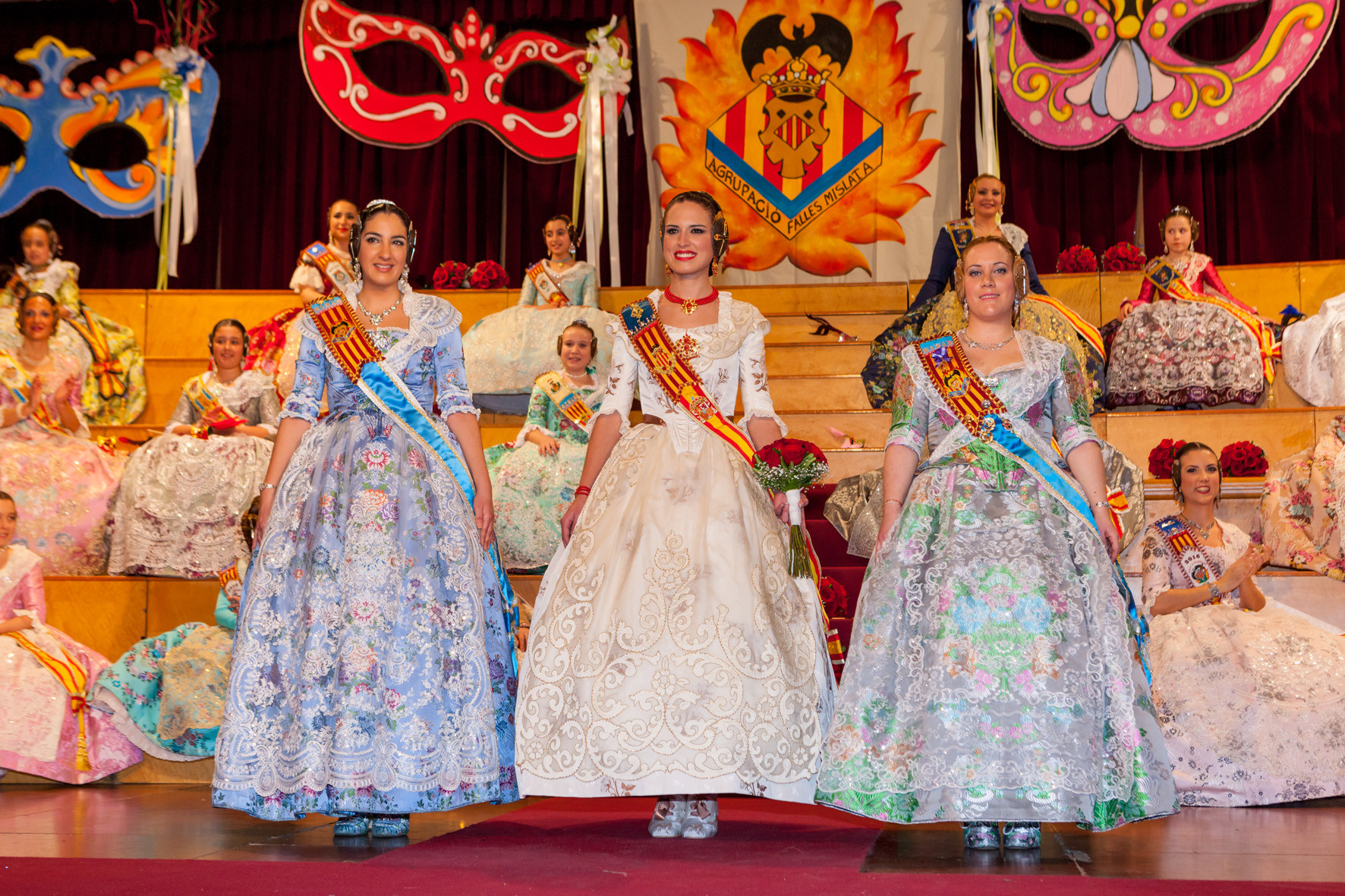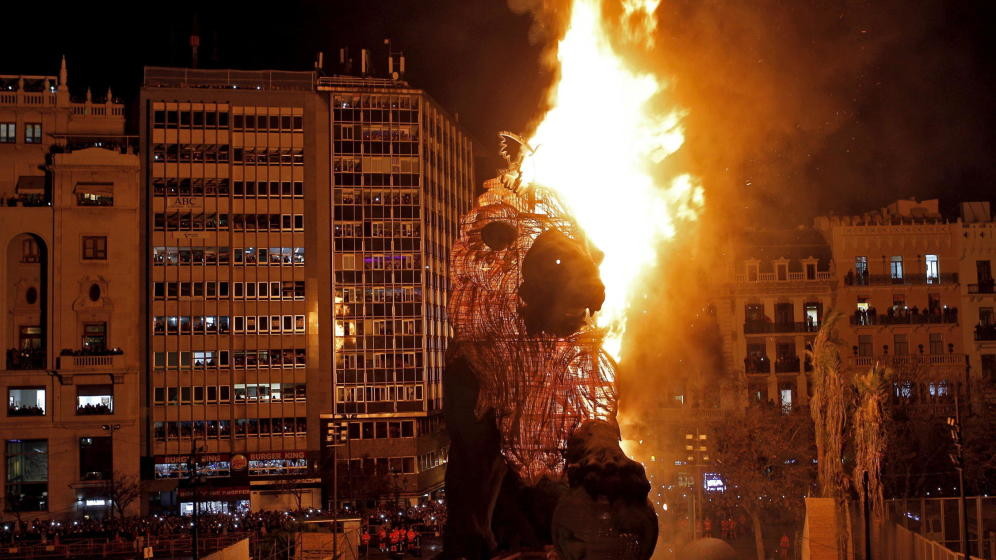Las Fallas: A Valencian Celebration
The biggest and most spectacular Valencian festival is celebrated in the middle of March, called las Fallas (or in Valencian, “Falles”), an event to commemorate Saint Joseph. The word “fallas” is used to name the celebration itself, as well as the constructions that are displayed in each neighbourhood during the festival. Each neighbourhood has its own “falla”, a huge construction made largely out of paper. The themes of each falla differ; some fallas aim to be satire and others have a more artistic theme, or relate to a specific era. Each neighbourhood has a "normal" falla, and another, smaller one, by children. The children’s fallas take on the same theme as the neighbourhood normal ones, so there’s a sense of consistency. During las Fallas, people from all over Spain, as well as from other countries, come to Valencia to admire the fallas from each neighbourhood, choose their favourites, and take part in the festivities that go on until March 19th.

Each day, and more importantly, each night, there’s different events. The “falleros” and “falleras” (people that pay, organise and dress up for the event), dress up in their spectacular costumes and dresses (and as I’m told, very expensive dresses), and take to the street to celebrate. Each falla elects a “Fallera Mayor”, kind of like a conductor, to lead the festivities. It’s incredible to see so many people participating in the event, representing their neighbourhood with pride and happiness. Even the babies dress up as falleros and falleras, and I still remember little girls who couldn’t even walk yet, dressing up in super small fallera dresses, with their hair styled like a typical fallera, each will a smile on their face while they were in their mother’s arms, also dressed as fallera.

Each morning, there’s “the Awakening”, and as no one would know from the word, this is used to describe the orchestras from each falla that awaken everyone by playing their instruments in a festive and joyful way!
My friends and I could not miss the Fallas and its celebrations. Many tourists rent the hostels, hotels, and apartments, so those of us already in Valencia had to take advantage of the occasion. I'll write specifics of the event in another blog, but in this one, I’ll give you a general idea of how we celebrated.
Every day, my drama friends and I all met to participate in various events. I remember the “Mascletá” well; every day at two in the afternoon the whole city sets off fireworks, though the most impressive were by the “Plaza de Ayuntamiento”, a plaza by Valencia’s “Centro Histórico”. We then realised that Valencians love fireworks. The same happened at night – various locations set off fireworks. I remember one by the Alameda fountain, but I’m sure other places also set them off… I’ve been to so many different places that I can’t remember them all, but I do remember that each night, before going out to party, we were looking up at the sky which suddenly became a trove of multicoloured lights. The last night of las fallas is called “nit de foc”, which is Valencian for “night of fire”.
That night, the felleros and falleras orgnisase events such as concerts, or parties, to dance the night away, right next to their falla (their construction). These are called “verbenas”, but I’ll talk about these in detail in another post.
Las Fallas finish with “la cremá”, a party signifying the end of the celebrations in which all the fallas are burned. Those of us who have never gone to Las Fallas were really surprised to learn about la cremá. However the Valencians, who were already used to the idea, looked at us and very quietly, explained simply that “it’s just how it is”, and that “without la cremá, there’s no Fallas”. Well maybe that’s what makes the Fallas even more special: the feeling that they won’t last forever. Maybe that’s what makes us enjoy these five days the fullest.

At the end of the celebrations, there were many awards for the best Fallas. Although my Spanish drama friends tried to explain the system of evaluation, I’m still confused so I’ll not even try to explain it. The only thing I can surely say is that there’s different prizes for the “normal” fallas, and the children’s fallas, and that there are a large number of prizes and many different categories of fallas, and I believe the categories are determined by the size and height of each falla.
Las Fallas is a very important celebration for Valencians. Before being an Erasmus student in Valencia, I didn’t even know about this tradition, but now I’ve been a part of the celebration and I’ve got the best memories of these five days. Not only could I get to know a very special part of Valencian culture, but I could also be with my friends and celebrate it to the fullest.
Photo gallery
Content available in other languages
- Español: Las Fallas
- Italiano: Las Fallas
- Português: Las Fallas
- Français: Les Fallas
Want to have your own Erasmus blog?
If you are experiencing living abroad, you're an avid traveller or want to promote the city where you live... create your own blog and share your adventures!
I want to create my Erasmus blog! →


















Comments (0 comments)